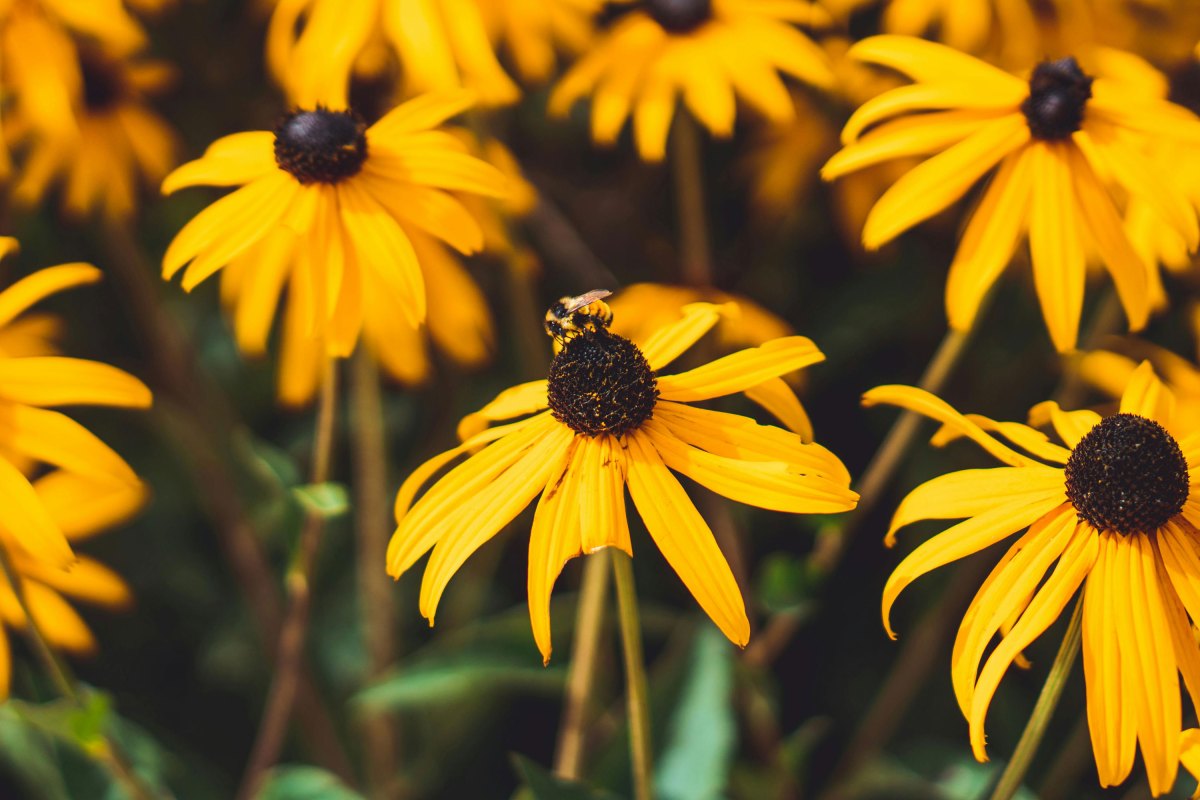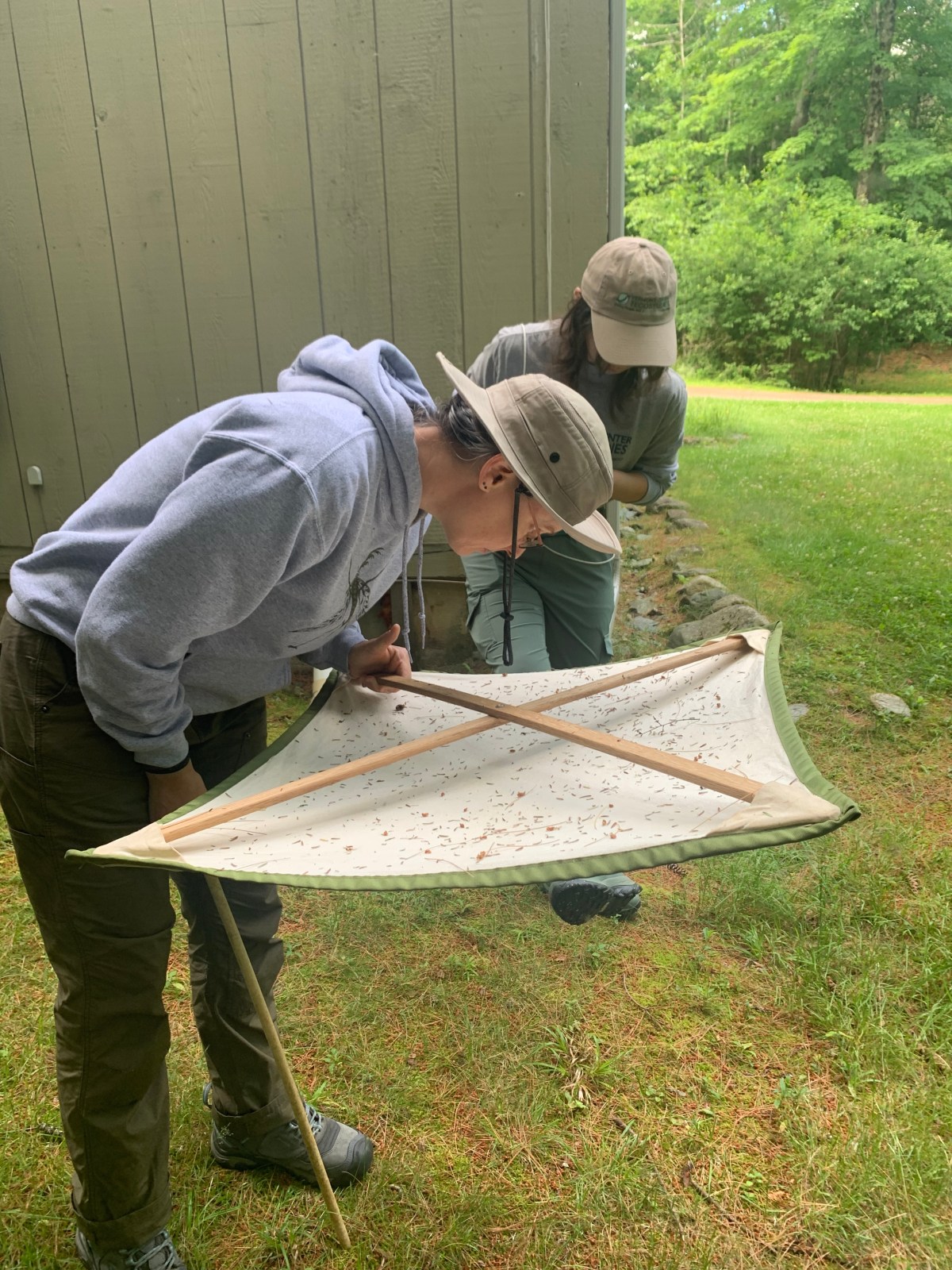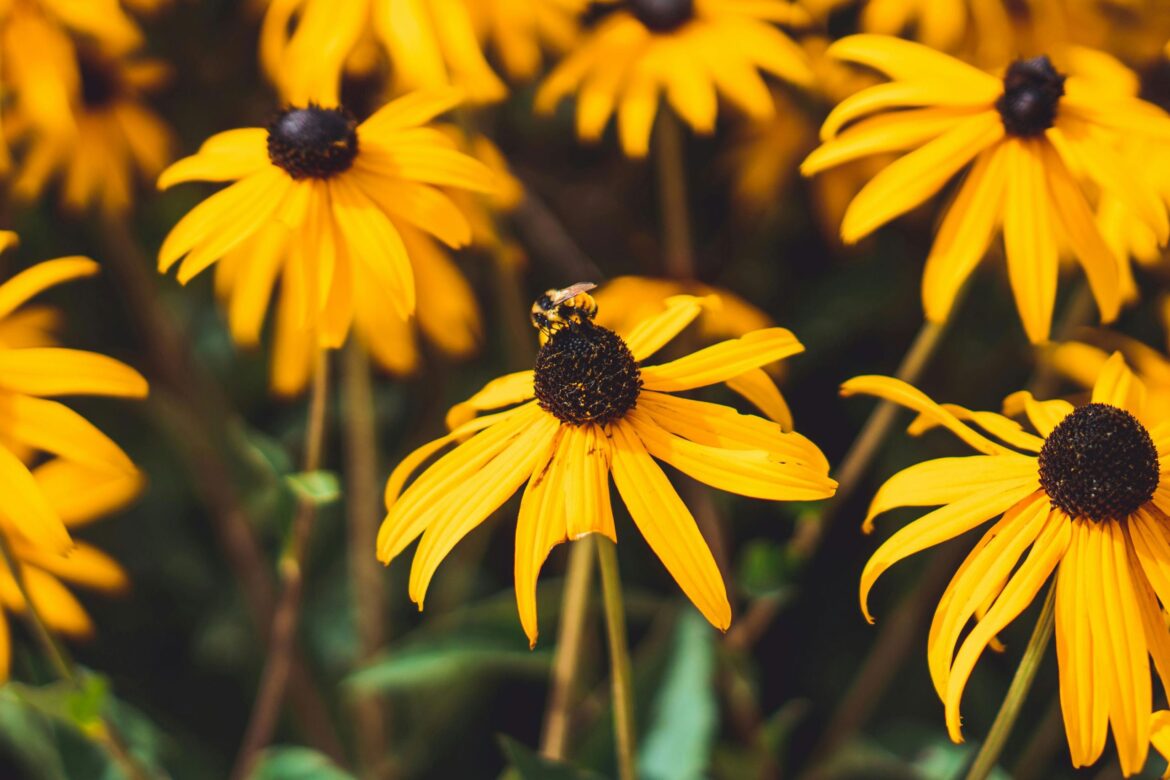 A bee lands on a black-eyed susan flower. Stock photo via Pexels
A bee lands on a black-eyed susan flower. Stock photo via Pexels
Pollinators play a substantial role in Vermont, with 60% to 80% of the state’s wild plants dependent on them to grow — but the typical American lawn may be helping drive them toward collapse.
In 2024 alone, U.S. beekeepers lost an unprecedented 70% to 100% of their managed honeybee colonies. But in Vermont, native bees are under the biggest threat of decline, according to Leslie Spencer, a University of Vermont PhD candidate and Gund Institute fellow.
Spencer and other researchers say grass-only yards that lack food and shelter for pollinators are part of the problem, in addition to pesticides and temperature fluctuations due to climate change.
Lawn care campaigns like “No-Mow May” have grown in popularity, encouraging residents to pause mowing for a month to support insects emerging from overwintering. But protecting pollinators requires more than a single-month pause — it demands long-term, practical changes to how people manage their yards, according to Amber Jones, a staff biologist at the Vermont Center for EcoStudies.
“I think the first step is cultivating a safe haven,” Jones said. “Our yards should be pollinator and animal habitats. They shouldn’t be bare wastelands for acres, if we can help it, because that just doesn’t benefit the wildlife.”
Sustainable changes can include things like adding more native plants to your yard, constructing a pollinator garden or leaving some sections unmowed to help wildlife thrive. Here are a few ways Vermonters can make their gardens and yards more sustainable.
Add native plants to your garden
A rule of thumb to follow when planting for pollinators is to add native species because these plants coevolved alongside Vermont’s hundreds of native bee and insect species, Spencer said.
Native wildflowers as well as orchard and berry-producing shrubs provide nectar and shelter for bees and insects — and can beautify your garden in the process, according to the Vermont Fish & Wildlife Department. Some flowering plant options include:
Easier-to-grow starter plants such as goldenrods, milkweed and coneflower.
Popular wildflowers like native azalea, wild bergamot, violets and black-eyed Susan.
Shrubs like crabapples, raspberries, blackberries, blueberries and roses.
Determining your site conditions can help you assess what plants will grow best, but whether you have sand, clay, wet or dry soil in your outdoor space, native plants can grow. Most importantly, pollinator gardens should last year-round, Spencer said.
“You want something that blooms each month of the growing season,” she said, from April all the way to the autumn frost.
The Fish & Wildlife Department has a seasonal list of pollinator-friendly perennial species that includes each plant’s bloom months and height.
 Vermont Center for Ecostudies biologist Amber Jones and biologist intern Pia Carman count invertebrates collected from a lawn for the Upper Valley Backyard Tick Project. Photo courtesy of Gita YinglingSwap out grass for alternatives
Vermont Center for Ecostudies biologist Amber Jones and biologist intern Pia Carman count invertebrates collected from a lawn for the Upper Valley Backyard Tick Project. Photo courtesy of Gita YinglingSwap out grass for alternatives
Some gardeners may want to consider replacing or supplementing a traditional lawn or turf grass with low-growing alternatives, which can be an easy way to make your yard more ecologically beneficial, according to the Vermont Wildflower Farm. In Vermont, these traditional lawns can be swapped out for a variety of native flowering groundcovers.
Clover requires less watering and maintains a vibrant green color.
Selfheal is a low-growing purple-flowered plant that thrives in lawns and supports native bees.Wild strawberry offers food for pollinators and people with its flowers and edible berries.
Creeping thyme is a drought-tolerant herb and slow but effective ground cover.
Some of these alternatives can grow in lawns without being planted, such as wild strawberry plants and violets. According to Jones, simply raising the deck of your lawnmower four inches high can preserve these plants even as they grow among turfgrass.
Lawn alternatives can boost biodiversity while creating a visually appealing yard. In addition, they are resilient, often requiring less mowing, watering and chemical intervention than traditional grass, according to the North American Butterfly Association.
Shrink your lawn
If opting to mow less, shrinking your lawn over time can also mitigate some of the invasive plants that can arise as a result, such as barberry, garlic mustard and even shrub honeysuckle. By watching out for invasives in concentrated areas, gardeners can quickly identify and remove them.
Spencer said another option is to “soften the edges” of your lawn, or put perennial garden beds on the perimeter to reduce the amount of grass in your area.
“Most of us aren’t using the entirety of our maintained lawn space,” she said. “So you can either put in perennial beds or stop mowing bits of your lawn to really create some sort of wild edges.”
 Canadian Tiger Swallowtail (Papilio canadensis) on Common Milkweed (Asclepias syriaca) in Vermont. Photo courtesy of Bernie Paquette on iNaturalist.Consider why you mow
Canadian Tiger Swallowtail (Papilio canadensis) on Common Milkweed (Asclepias syriaca) in Vermont. Photo courtesy of Bernie Paquette on iNaturalist.Consider why you mow
The choice to cultivate a wilder, more biodiverse outdoor space also sparks curiosity about why mowed and manicured yards have become common practice, Jones said.
Trimmed grass is part of a uniquely American homeowner aesthetic. With more than 40 million U.S. acres covered by lawns, they are the single largest irrigated crop grown in the country.
An estimated two-thirds of Vermont’s population live in rural areas, according to the U.S. Department of Health and Human Services. Grass-only lawns are common in these rural and residential spots, but they rely on pesticide and pollution-inducing fertilizer treatments while offering little to no food or habitat for wildlife, according to the National Wildlife Federation.
Although lawns can be used for sports or recreation, Spencer pointed out the low biodiversity, which are a major drawback for wildlife. Pollinators need varied habitats, which gardeners should be mindful of all year, Jones said. In the fall, insects nest and hibernate in hollow stems and sticks. The leaf litter and debris we often clear or leafblow could be instead used by bees, caterpillars and overwintering insects, she said.
“The lawn is not the only way to have a landscape,” Spencer said. “We put so many resources into creating a lawn because of this American status symbol that really permeates our residential culture.”
Even for those who cannot alter their lawns, due to rental agreements or homeowners association rules, Jones and Spencer agreed there are other impactful ways to support pollinators. Spencer recommended planting native species in container gardens and advocating against pesticide use.
“There are hundreds, if not thousands, of native pollinators that need protecting,” she said. “Most people don’t even realize there’s a whole world of insects right beneath our noses.”

